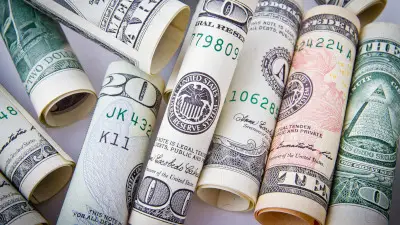What is Fiat Money (Fiat Currency)?

In the world of finance, the term "fiat money" or "fiat currency" is frequently used to describe the conventional currency issued by governments and central banks, such as the US dollar, euro, or Japanese yen. Unlike commodities like gold or silver, which have intrinsic value, fiat money derives its value from government regulation or law (the Latin word "fiat" translates to "let it be done"). In this comprehensive guide, we delve into the concept of fiat money, its history, characteristics, advantages, and criticisms.
The Origins of Fiat Money
The concept of fiat money dates back to ancient civilizations, where rulers and governments issued coins made from various metals such as gold, silver, and bronze. These coins were valued based on their metal content and were widely accepted as a medium of exchange.
Over time, as economies grew more complex and trade expanded, governments began to issue paper currency as a convenient alternative to metal coins. Initially, these paper notes were backed by precious metals held in reserve, such as gold or silver. However, as the volume of trade increased, it became impractical to maintain full metal backing for all circulating currency.
In the 20th century, most countries transitioned to fiat money systems, where the value of currency is not tied to any physical commodity but is instead established by government decree or law. Under a fiat money system, central banks have the authority to issue currency and regulate its supply, with the goal of maintaining price stability and promoting economic growth.
Characteristics of Fiat Money
Fiat money possesses several key characteristics that distinguish it from commodity money:
- Legal Tender: Fiat money is declared by governments as legal tender, meaning it is accepted for payment of debts, taxes, and other financial obligations within the country's jurisdiction.
- Government Issued: Fiat money is issued and regulated by governments and central banks, which have the authority to control its supply and circulation.
- Value by Decree: The value of fiat money is established by government decree or law, rather than being based on the intrinsic value of a physical commodity.
- Monetary Policy: Central banks use monetary policy tools such as interest rates, open market operations, and reserve requirements to influence the supply of money and credit in the economy, with the aim of achieving macroeconomic objectives such as price stability and full employment.
- Legal Protection: Fiat money is backed by the full faith and credit of the government, providing legal protection against counterfeiting and ensuring the stability and integrity of the financial system.
Advantages of Fiat Money
Fiat money offers several advantages over commodity-based forms of money:
- Flexibility: Fiat money allows governments and central banks to adjust the money supply in response to changing economic conditions, providing greater flexibility in managing monetary policy.
- Convenience: Fiat money is lightweight, durable, and easily divisible, making it a convenient medium of exchange for everyday transactions.
- Stability: Fiat money systems are less susceptible to supply shocks and fluctuations in commodity prices, providing greater stability in the value of currency over time.
- Accessibility: Fiat money is widely accepted and accessible to individuals of all income levels, promoting financial inclusion and facilitating economic participation.
- Government Control: Fiat money systems allow governments and central banks to exercise control over the money supply, interest rates, and other monetary policy tools, enabling them to pursue macroeconomic objectives such as price stability and full employment.
Criticisms of Fiat Money
Despite its widespread use, fiat money has been subject to criticism from various quarters:
- Inflation Risk: Fiat money systems are vulnerable to inflationary pressures, particularly when central banks engage in excessive money printing or deficit spending, leading to a loss of purchasing power over time.
- Dependence on Government: Fiat money relies on government decree and legal tender laws for its value, making it susceptible to political manipulation and abuse.
- Centralization: Fiat money systems are centralized, with control over the money supply concentrated in the hands of government authorities and central banks, raising concerns about transparency, accountability, and systemic risk.
- Counterparty Risk: Fiat money is subject to counterparty risk, as its value depends on the stability and creditworthiness of the issuing government or central bank.
- Loss of Purchasing Power: Over time, fiat currencies tend to lose purchasing power due to inflation, eroding the real value of savings and investments denominated in fiat money.
The Future of Fiat Money
Despite its criticisms, fiat money remains the dominant form of currency in most economies around the world. However, the rise of digital currencies and decentralized finance (DeFi) platforms has sparked renewed interest in alternative forms of money and monetary systems.
Central banks are exploring the potential of central bank digital currencies (CBDCs) as a digital alternative to traditional fiat money, offering benefits such as faster payments, lower transaction costs, and greater financial inclusion. Meanwhile, cryptocurrencies such as Bitcoin and Ethereum are challenging traditional notions of money and finance, with proponents advocating for a decentralized and borderless financial system.
In conclusion, fiat money plays a crucial role in modern economies as the primary medium of exchange, unit of account, and store of value. While it offers several advantages, it is not without its drawbacks and criticisms. As technological advancements and changing consumer preferences reshape the financial landscape, the future of fiat money will continue to evolve, with implications for monetary policy, financial stability, and economic prosperity.
External Sources
- Fiat money. Wikipedia.